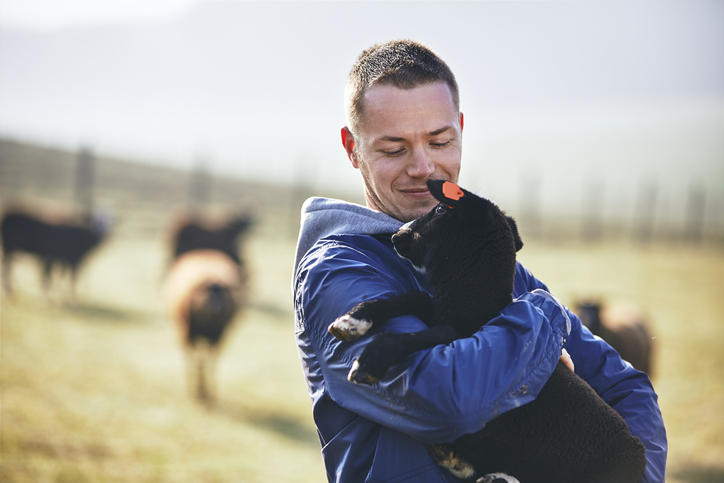Properly Insure Your Farm’s Crops and Livestock
You know that you need to insure your crops and livestock, but you’re not sure where to begin? Crop insurance can be complicated, so let’s start with the basics.
Why Arkansas Farms Need Crop Insurance
First off, most general crop insurance policies protect against the loss of crops through natural disasters, such as hail, drought or flooding, as well as against the loss of revenue due to price declines. Farm insurance for livestock covers farm animals in the events of accidents.
In 2017, crop insurance payouts to Arkansas farmers were over three times what farmers paid in—roughly $146 million, compared to $40 million. Today, about 90 percent of all planted land is insured, and sometimes banks require farmers to carry insurance before approving farm loans. If you are a farmer or a rancher, you can’t afford not to insure your livelihood.
Agriculture is a major economic driver in Arkansas, contributing nearly $16 billion to the state’s economy each year. The average Arkansas farm is 308 acres, valued at over $700,000. Arkansas is the world’s top producer of rice, the second largest producer of poultry, and the fourth largest producer of cotton. Soybeans, corn, feed grains, catfish, beef, dairy and pork are all among the agricultural products Arkansas exports.
But what is crop insurance versus farm insurance for livestock? What do they cover? And if you’re just starting out in farming, are there any incentives to make crop insurance easier on your wallet?
What is Crop Insurance?
Most Crop Insurance is a federal/private partnership between the US Department of Agriculture and private providers such as Farm Bureau Mutual Insurance of Arkansas, Inc. Insurance agencies sell and service the policies, but the USDA oversees the program, ensuring that it remains affordable. Multi-Peril Crop Insurance has standard rates, which means you’ll get the same quote, no matter which agency you go through.
Multi-Peril Crop Insurance covers crop disease, insect infestation, drought and adverse weather events, as well as a loss of revenue due to low production or low market pricing. It also covers an inability to plant due to uncontrollable circumstances, such as a late freeze. Crop insurance doesn’t just cover crops—in many cases, it may cover livestock, bees, pastures, and even oysters and clams. (A complete list of covered commodities can be found here.)
What Are Some Types of Crop Insurance?
There are many different options to structure farm insurance.
Actual Production History and Yield Protection
Actual Production History and Yield Protection plans base coverage on the production history of your crops in previous years. (If actual production records are not available, something called a “transitional yield” can be substituted, which is based on a 10-year county average.)
Actual Revenue
Actual Revenue plans base protection and premiums on revenue your crops brought in during previous years. The plan protects against weather-related and other unavoidable loss.
Revenue Protection
Revenue Protection plans protect against price changes, as well as production losses (plant prevention and replant protection), up to a set dollar amount, with premiums calculated against a projected price.
Area Plans
Area Plans base the expected yield or revenue on the average yields of an entire defined area, such as a county, and may be a good option for a new farmer who doesn’t have an established history of personal yields and revenue. However, these plans do not protect you in the event of interrupted planting or re-planting.
Pasture Rangeland Forage
Pasture Rangeland Forage is a bit like an area plan. Coverage is based on situations that happen within a set area, or grid, rather than within a particular farm. This insurance is only available for hay and grazing crops.
Stacked Income Protection
Stacked Income Protection is an area-based plan for cotton only. You may purchase this as a stand-alone policy or as an add-on to a more comprehensive policy.
Whole Farm Revenue Protection
Whole Farm Revenue Protection is a comprehensive policy that covers all farm commodities and is helpful if you grow an organic, specialty, or uncommon-to-your-area crop. These types of crops may not qualify for other plans. It’s also a good choice if you grow many crops, rather than a single crop, and don’t want to take out a separate policy on each one.
Named Peril Insurance
Private Crop Insurance, also called Named Peril Insurance, is not part of the USDA-backed coverage. Private Crop Insurance policies cover some weather events, such as hail damage, or man-made events, such as vandalism.
Are There Insurance Breaks for New Farmers and Ranchers?
The 2014 Farm Act gives people who have been farming or ranching for less than five years a ten percent reduction on insurance premiums and an exemption from the $300 administrative fee for catastrophe policies. New farmers are also allowed a higher transitional yield number, since they haven’t yet accumulated actual yield numbers.
What are Some Livestock Options?
You can insure individual, high-value animals and/or herds on our Ag Promise policy. Basic coverage insures livestock in the event of theft, collision, flood, and earthquake. Additional coverage can be purchased for the perils of electrocution, attacks by wild animals or dogs, drowning, and consequential loss or damage resulting from equipment breakdown. A local Farm Bureau Insurance agent will be able to outline your options.
A Good Agent Makes the Difference
The type of insurance plans available to your farm depends largely on your crop and geography, which is why it’s critical to have an experienced local agent to guide you through this intricate process.
A Farm Bureau Insurance agent can help you bundle the different policies you need, to tailor something that amounts to comprehensive coverage, and then some, for your specific farm.
Get in touch with one of our agents today!

